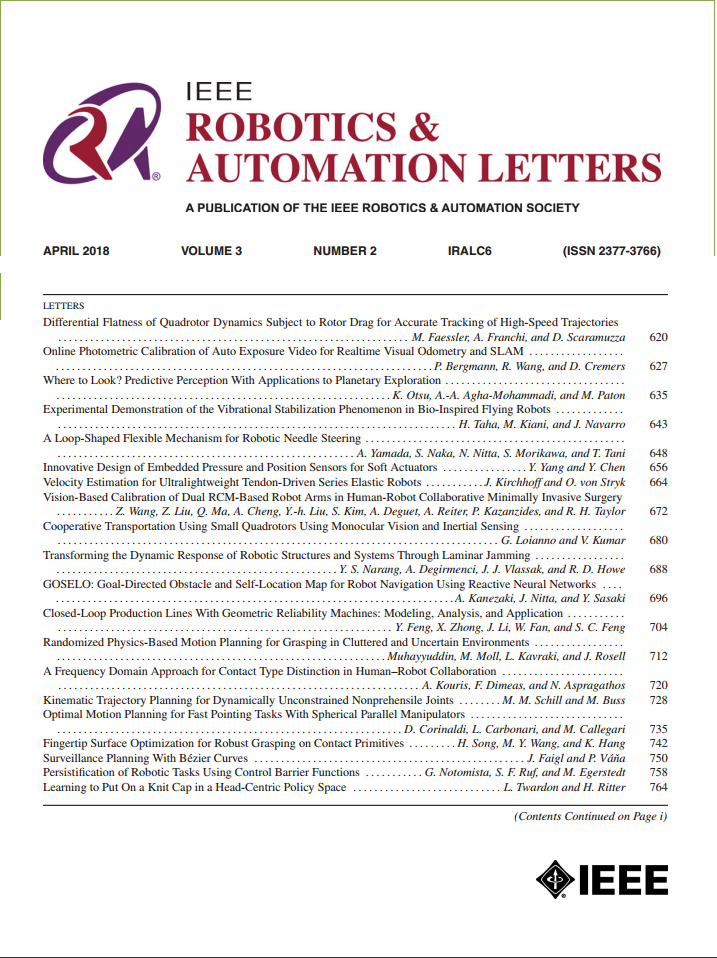嘈杂环境下可靠盲文阅读的神经形态触觉系统
IF 4.6
2区 计算机科学
Q2 ROBOTICS
引用次数: 0
摘要
神经形态传感器由于其低延迟、低计算和低功耗要求,特别是当与峰值神经网络(snn)配对时,在人工触觉中是一种很有前途的技术。在这里,我们探索这些系统适应和概括触觉任务中各种不确定性来源的能力。本文以盲文阅读为应用任务,采用神经形态触觉传感器(NeuroTac),利用六自由度机械臂,在不同的点触速度、中心位置和压痕深度条件下,对27个盲文字符进行了基于事件的数据采集。我们初步分析了空间位置和速度对尖峰卷积神经网络(SCNNs)分类性能的影响。然后,我们证明了scnn能够在每个维度上进行泛化。最终的通用SCNN模型在所有4个维度上都具有不确定性,准确率达到95.33%。本研究展示了SCNN在触觉任务中的噪声降解性能,并概述了单个SCNN在多个不确定性维度上的泛化潜力。本文章由计算机程序翻译,如有差异,请以英文原文为准。
A Neuromorphic Tactile System for Reliable Braille Reading in Noisy Environments
Neuromorphic sensors are a promising technology in artificial touch due to their low latency and low computational and power requirements, particularly when paired with spiking neural networks (SNNs). Here, we explore the ability of these systems to adapt to and generalize across varying sources of uncertainty in tactile tasks. We choose Braille reading as an application task and collect event-based data for 27 braille characters with a neuromorphic tactile sensor (NeuroTac) under varying conditions of tapping speed, center position and indentation depth using a 6-DOF robot arm. We initially analyze the effect of spatial location and speed on classification performance with spiking convolutional neural networks (SCNNs). We then show that SCNNs are able to generalize across each dimension. The final general SCNN model reaches 95.33% accuracy with uncertainty in all 4 dimensions. This research demonstrates the noise degradation performance of SCNNs in a tactile task, and outlines the potential of a single SCNN to generalize across several dimensions of uncertainty.
求助全文
通过发布文献求助,成功后即可免费获取论文全文。
去求助
来源期刊

IEEE Robotics and Automation Letters
Computer Science-Computer Science Applications
CiteScore
9.60
自引率
15.40%
发文量
1428
期刊介绍:
The scope of this journal is to publish peer-reviewed articles that provide a timely and concise account of innovative research ideas and application results, reporting significant theoretical findings and application case studies in areas of robotics and automation.
 求助内容:
求助内容: 应助结果提醒方式:
应助结果提醒方式:


